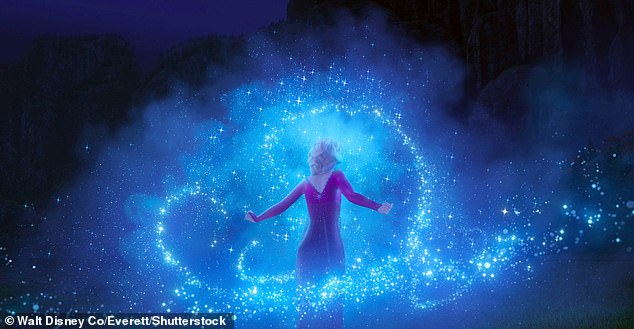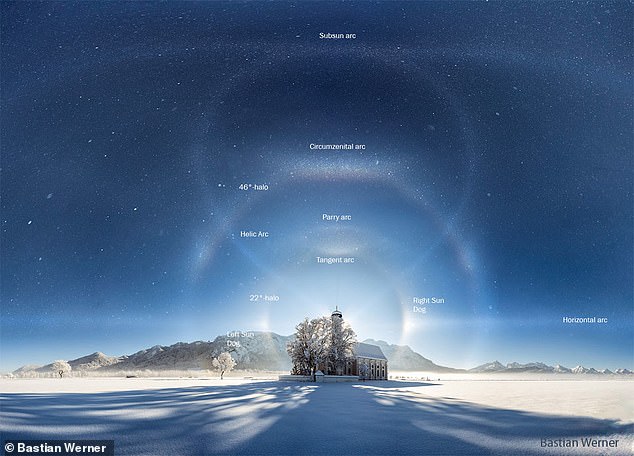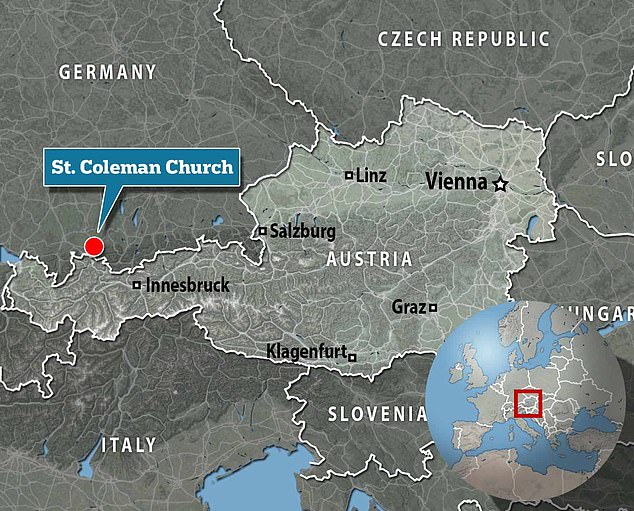Elsa, is that you? NASA shares a stunning photo of an ‘ice halo’ around the sun – and it looks just like a scene from Frozen
Snow Queen Elsa can freeze anything she touches, shoot ice crystals from her wrists and even build entire ice palaces.
The Disney Frozen star now appears to be working her magic on a picturesque area in southern Germany.
A stunning snapshot shared by NASA shows a church near Füssen in Bavaria surrounded by “ice halos” – a rare phenomenon caused by frozen water crystals in the air.
The shapes of these stunning optical spectacles can range from rings to arcs and even spots in the sky.
This image is rare, according to NASA, because it captured multiple halos at once, including one in the shape of a hot air balloon.
A new snapshot shared by NASA shows a church near Füssen in Bavaria surrounded by “ice halos” – a rare phenomenon caused by frozen water crystals in the air.

In the Disney movie Frozen, Elsa the Snow Queen can shoot beams of ice from her wrists and freeze anything she touches
The idyllic winter scene was captured earlier this month by German photographer Bastian Werner, who was snapping photos near the church.
Post it on His account on InstagramMr Werner described it as a “perfect idea” and “very rare”.
“I was running like crazy through the deep snow when I noticed the icy fog at the end of the shoot in St Colman,” he said.
“There was 60-70cm of snow next to the church.
“I rarely rate my own photo 10/10, but it really doesn't get any better.
“I've experienced a lot this year, but I never expected anything like this!”
On Wednesday, NASA selected the image for its Astronomy Picture of the Day (APOD) website, which uploads a new image to the public every day.
The space agency described it as “one of the greatest sights” and described the science behind the formation of the “unusual sky arcs.”

The image shows a prominent ice “halo” – the halo is at a 22 degree angle and the halo is at a 46 degree angle, which are at the top. The halo resembles the outline of a hot air balloon

This stunning shot was captured by the photographer at St. Colmann's Church near Füssen in Bavaria, Germany
Under cold enough temperatures — below 32 degrees Fahrenheit or 0 degrees Celsius — water suspended in the air will freeze and turn into ice, creating a faint fog.
These ice particles are not necessarily heavy enough to fall to the ground, so they remain suspended in the air and can capture sunlight.
Sunlight reflects, refracts, and changes direction when it hits the crystals at an angle.
This results in an ice halo, an optical phenomenon that can range in shape from rings to arcs and even spots in the sky.
The image shows two prominent ice halos – the 22-degree halo and the 46-degree halo, which are at the top.
Multiple arcs are also visible, including the horizontal arc parallel to the Earth and the infrasolar arc, which is the upper arc of the Sun.
Finally, the balloon-shaped curve connecting the upper arc to the Sun, called the solar arc, is the rarest of all, according to NASA.
It is created by reflection from the sides of hexagonal ice crystals suspended in a horizontal direction.
According to the California Institute of Technology, “magnificent halos” can be observed from Antarctica, making for particularly stunning images.
In Antarctica, because the temperatures are so cold and the air is so dry, ice crystals grow very slowly.
This slow growth tends to produce very neat hexagonal leaflets, which are well suited to producing beautiful aerial displays.
(Tags for translation)dailymail

